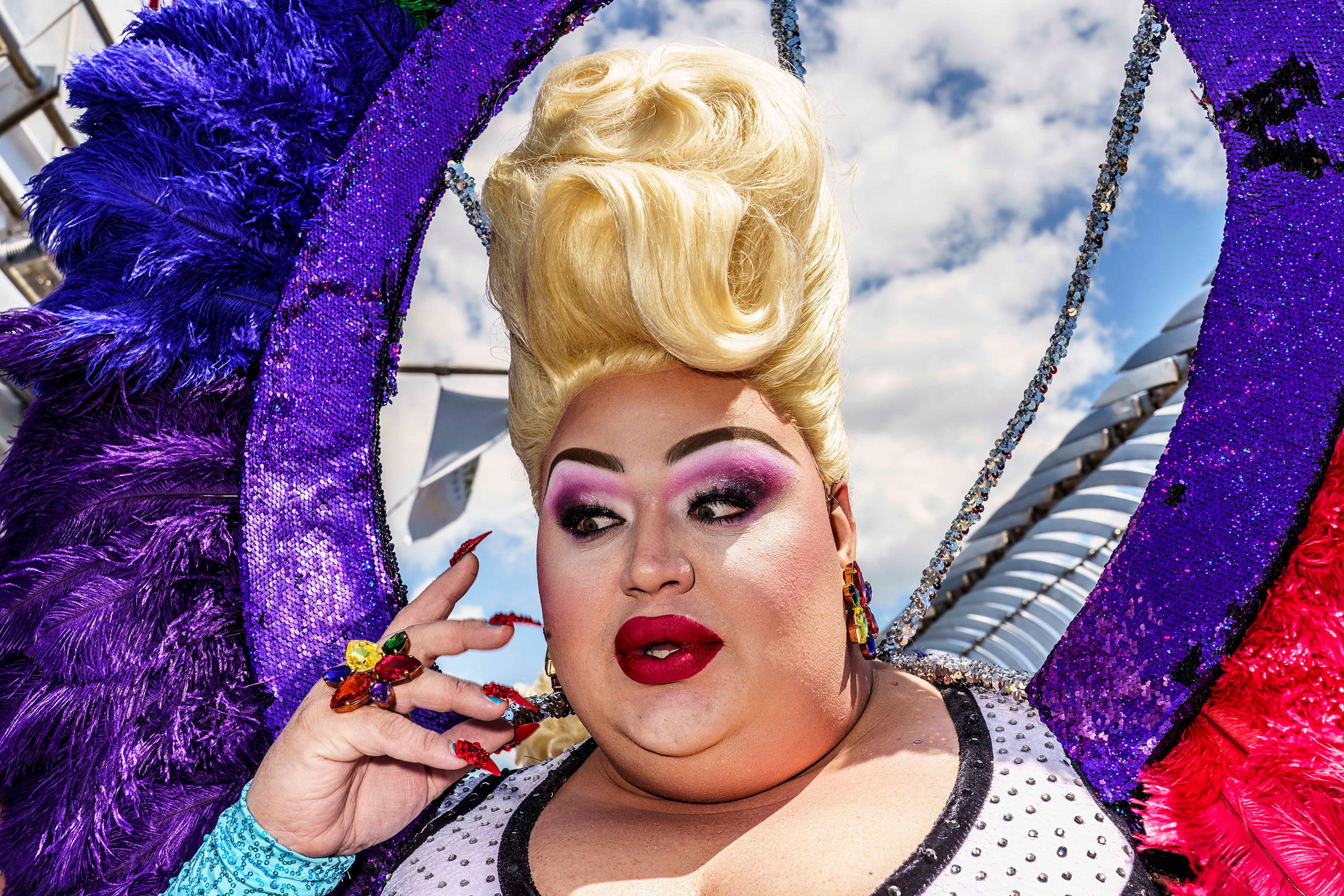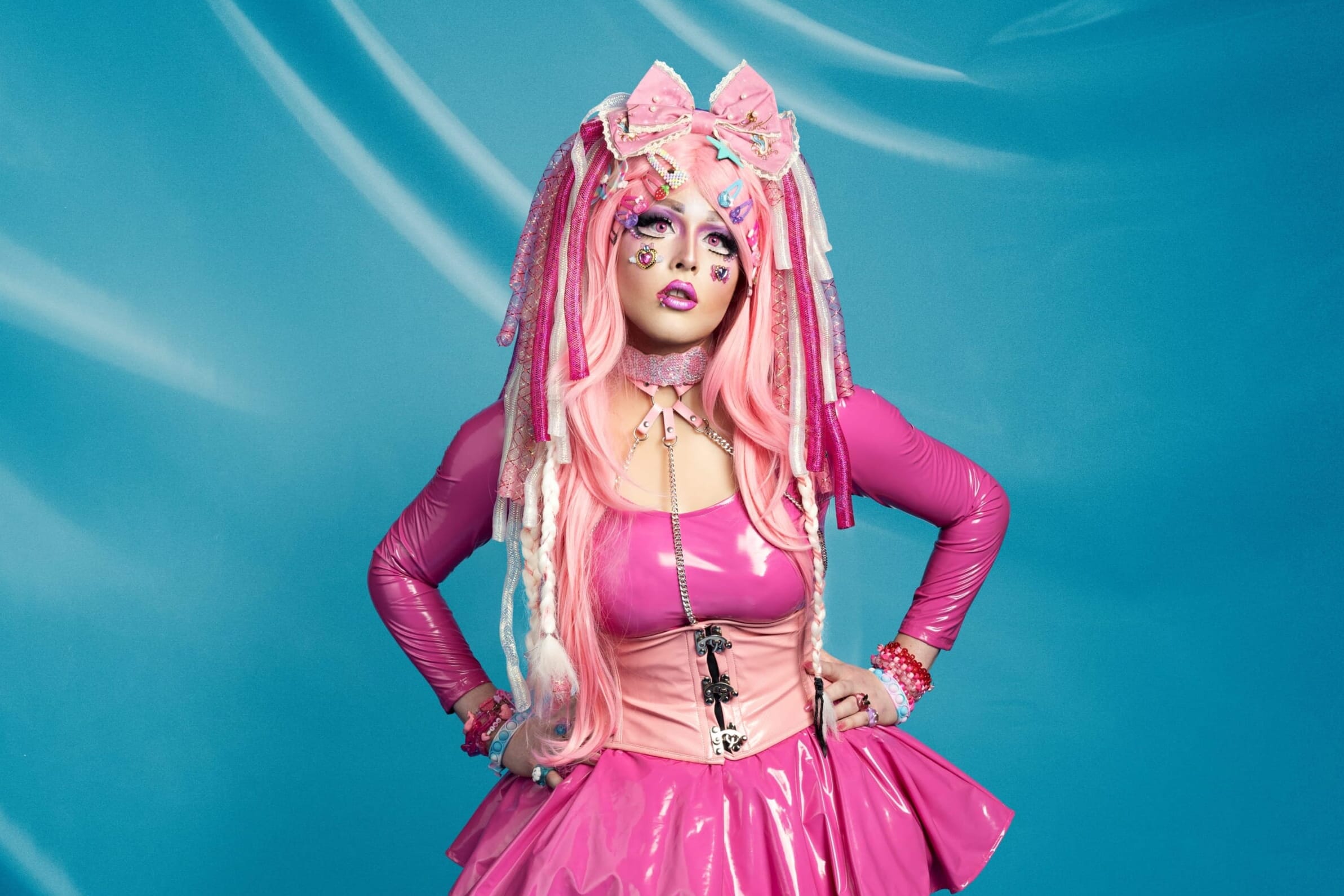Drag Artist Makeup
Stepping into the spotlight with bold confidence often starts with a brush stroke, doesn't it? For so many, the true magic of self-expression comes alive through makeup, and for drag artists, this is especially true. It's not just about looking good; it's about crafting a whole new persona, really. This kind of artistry allows folks to explore parts of themselves they might not otherwise, making a statement with every shade and shimmer.
You see, drag is a performance that embraces exaggerated femininity, masculinity, or other forms of gender expression, usually for entertainment. It's a type of performance art created by the queer community that involves exaggerated attire, resembling the opposite sex, or other forms of gender expression, which is rather fascinating. This art uses costumes, makeup, and other tools to present these heightened forms of gender expression, sometimes to critique gender inequalities and even imagine a transformational future, which is pretty powerful.
So, if you've ever wondered about the secrets behind those jaw-dropping looks, or how a face transforms so completely, you're in the right spot. We're going to take a closer look at the unique world of drag artist makeup, sharing tips, techniques, and a bit about why it matters so much. It's a journey into creativity, self-discovery, and, you know, just a whole lot of fun with cosmetics.
Table of Contents
- What is Drag Artist Makeup?
- The Art of Transformation: Key Elements
- Essential Tools and Products
- Tips for Beginners
- The Cultural Impact of Drag Makeup
- Maintenance and Removal
- Frequently Asked Questions About Drag Artist Makeup
- Bringing Your Inner Artist to Life
What is Drag Artist Makeup?
Drag artist makeup is, in essence, a highly specialized form of theatrical makeup, but with its own distinct purpose and techniques. It's about creating a character, often an exaggerated version of a gender, that can be seen from the back of a room, even under bright stage lights. This isn't your everyday look, you know? It’s about building a new face, sometimes literally, to convey a specific feeling or personality. When someone talks about drag, they are usually referring to the performance of exaggerated femininity, masculinity, or other forms of gender expression for entertainment, and the makeup is a huge part of that visual story.
The term "drag" itself originated as British theater slang in the 19th century and was used to describe the long skirts men wore for female roles, which would "drag" on the floor. Over time, it grew to mean the entire performance. Today, drag shows are typically staged in nightclubs and gay pride festivals, and the makeup is a central piece of the whole spectacle. It's about taking the ordinary and making it extraordinary, really. This resistance can be caused by various factors including the shape, size, and speed of the transformation, so it's a bit like creating a new persona.
The Art of Transformation: Key Elements
The core of drag artist makeup lies in its transformative power. It’s not just about applying makeup; it’s about reshaping, redefining, and creating illusions. There are several key elements that almost every drag artist uses to achieve their signature look, and each one plays a very important role in the overall effect.
Blocking Brows
One of the first and most striking steps in many drag makeup routines is blocking out the natural eyebrows. This creates a smooth canvas, allowing the artist to draw on new, higher, and more dramatic brows that completely change the face's structure. This technique usually involves using a strong glue stick, like a school glue stick, to flatten the brow hairs, then setting them with powder, and finally concealing them with a thick, opaque foundation. It’s a bit of a process, but it makes a huge difference in how the face looks.
Contour and Highlight
This is where the magic of reshaping truly happens. Drag artists use extreme contouring and highlighting to sculpt new cheekbones, slim the nose, and define the jawline, often creating a more angular or feminine appearance. They apply dark shades to areas they want to recede and light shades to areas they want to bring forward, making features appear larger or smaller than they actually are. This technique is often very exaggerated compared to everyday makeup, which is kind of the point.
Eye Makeup: Bigger is Better
When it comes to eyes in drag makeup, the rule is usually "the bigger, the better." Artists often extend their eyeshadow far beyond their natural eye shape, creating a much larger, more open-eyed look. This involves layers of vibrant eyeshadows, dramatic winged eyeliner, and sometimes multiple pairs of false eyelashes. The goal is to make the eyes the absolute focal point, drawing attention with their size and intense color, so it's quite a spectacle.
Lips: Overdrawn and Luscious
Just like the eyes, lips in drag makeup are often overdrawn to appear fuller and more voluptuous. Artists typically use a lip liner to extend the natural lip line, sometimes quite significantly, before filling in with a bold lipstick. This creates a larger, more expressive mouth that complements the exaggerated eyes and contoured face. It's about creating a sense of drama and allure, really.
Setting It All In Place
Because drag performances involve a lot of movement, sweat, and sometimes even close contact with an audience, setting the makeup is absolutely vital. Artists use heavy-duty setting powders, sprays, and sometimes even theatrical sealers to ensure their looks last for hours under hot lights. This step is what keeps everything from smudging or melting away, making sure the transformation stays put, which is pretty important.
Essential Tools and Products
To create these incredible looks, drag artists rely on a specific arsenal of tools and products. While many are similar to what you'd find in any makeup kit, they are often used in larger quantities or with different formulations. Think full-coverage foundations, strong adhesives for brows, and intensely pigmented eyeshadows. Large, fluffy brushes for blending, precise liners for intricate details, and a good quality setting spray are also absolutely necessary. You know, it's about having the right tools for the job, especially when the job is this demanding.
Many artists also use specialized products like theatrical grease paints or cream contours that offer a higher pigment load and better blendability for dramatic effects. The choice of products often depends on the specific look the artist wants to achieve, but durability and intense color payoff are almost always top priorities. It's not just about looking good for a selfie; it's about looking good for a whole performance, which is a bit different.
Tips for Beginners
If you're just starting your journey into drag artist makeup, it can seem a little overwhelming, honestly. But don't worry, everyone starts somewhere. A good first step is to watch tutorials, perhaps on platforms like YouTube, and practice, practice, practice. Don't expect perfection on your first try; it takes time and patience to develop these skills. Focus on one technique at a time, like mastering brow blocking before moving on to intricate eye looks. You know, baby steps are perfectly fine.
Start with more affordable products to get a feel for what works for you before investing in higher-end items. Experiment with different colors and styles to find what truly expresses your inner drag persona. Remember, drag is a performance of exaggerated femininity, masculinity, or other forms of gender expression, and your makeup is a key part of that. Have fun with it, and let your creativity shine. You can learn more about performance art on our site, which might give you some ideas.
The Cultural Impact of Drag Makeup
Drag artist makeup is far more than just cosmetics; it's a powerful cultural statement. It challenges traditional notions of gender, beauty, and identity. By exaggerating features and playing with gender presentation, drag artists use their makeup to critique societal norms and open up conversations about gender fluidity and acceptance. It’s a type of entertainment where people dress up and perform, often in highly stylized ways, and the makeup is central to this stylization.
This art form has evolved throughout history, moving from underground queer spaces to mainstream television, bringing its unique makeup aesthetic with it. It has inspired countless beauty trends and pushed the boundaries of what makeup can do. The very meaning of drag is to draw or pull slowly or heavily, and in a way, drag makeup pulls at our perceptions, making us see things differently. It's a testament to the power of self-expression and how art can truly change perspectives. Discover how drag has transformed from theatrical performances to a vital form of expression, which is pretty amazing.
Maintenance and Removal
After a performance, taking care of your skin and removing such heavy makeup is just as important as putting it on. Drag makeup often involves multiple layers of products, so a thorough cleansing routine is a must. Using oil-based cleansers or balms can help break down stubborn foundations and adhesives, followed by a gentle face wash to ensure all residue is gone. It’s about keeping your skin healthy for your next transformation, you know?
Hydrating and moisturizing your skin after removal is also very important to keep it happy and ready for future looks. Proper care ensures that the skin remains a good canvas for all the amazing artistry that happens. This resistance can be caused by various factors, including the shape, size, and speed of the performance, so maintaining your skin is crucial for repeated transformations. You can find more tips on heavy makeup removal to help you with this process, and link to this page here for more insights.
Frequently Asked Questions About Drag Artist Makeup
People often have questions about drag artist makeup, and that's totally understandable. It's a unique art form, after all!
What kind of makeup do drag queens use?
Drag queens typically use very full-coverage, long-wearing makeup products. This often includes heavy-duty foundations, cream contours, highly pigmented eyeshadows, strong glues for brow blocking, and industrial-strength setting sprays. The goal is to create a look that stands out under stage lights and lasts for hours, which is pretty demanding.
How long does drag makeup take?
The time it takes for drag makeup can vary quite a bit, honestly. For a full, elaborate drag look, it can take anywhere from two to four hours, sometimes even longer for very detailed or intricate designs. It's a true art form that requires patience and precision, so it's not a quick process.
Is drag makeup different from theatrical makeup?
While drag makeup shares some techniques with traditional theatrical makeup, it's generally much more exaggerated and specific to the art of drag. Theatrical makeup might aim for realism or character transformation, but drag makeup often pushes boundaries further, focusing on extreme contouring, larger-than-life features, and a distinct aesthetic that critiques or plays with gender norms. It’s a bit of a specialized niche, really.
Bringing Your Inner Artist to Life
Drag artist makeup is a vibrant, expressive art form that allows individuals to transform and present a powerful persona to the world. It’s a testament to creativity, resilience, and the joy of self-discovery. Whether you're an aspiring drag performer, a makeup enthusiast, or simply curious, understanding the artistry behind these looks offers a glimpse into a world of bold expression. It's a truly amazing way to communicate without words, you know, just with color and shape. So, perhaps consider picking up a brush and exploring what bold, transformative looks you might create yourself. The possibilities are, honestly, pretty endless.
- Emotion Clothing
- Samanthaea Onlyfans
- Blue Collar Barbering
- Islamic Center Of Staten Island
- Drew Fisher

Drag Race Sverige premiering on SVT this weekend - Radio Sweden

Eureka O’Hara: Drag Is an Expression of Queer Existence - ReportWire

Endigo: The First Japan-Based Drag Queen in the Ru Paul Franchise